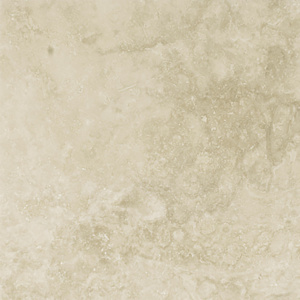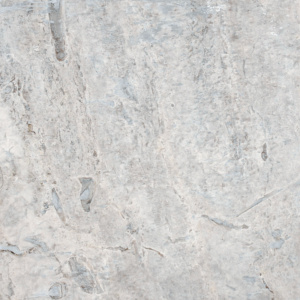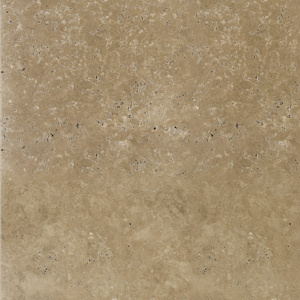Walnut Travertine: Characterized by its rich, dark brown color, walnut travertine offers a more dramatic look. It's often used in areas where a bold, strong presence is desired.Noce Travertine: Featuring dark brown tones and natural variations, noce travertine provides a rustic appeal, making it suitable for outdoor applications like patios and walkways.Silver Travertine: This variety has a unique gray color that can range from light to dark shades. Silver travertine is favored for modern designs, offering a contemporary feel to floors and walls.Gold Travertine: With its striking gold and yellow tones, gold travertine delivers a bright, sunny aesthetic. It's a popular choice for areas that benefit from a splash of color.Each type of travertine stone brings its own unique qualities and colors to the table, allowing for a wide range of design possibilities in both residential and commercial projects.
How is Travertine Stone Produced?
The production of travertine stone begins with the extraction process, where large blocks of travertine are carefully mined from quarries. These quarries are typically located in areas where mineral springs have deposited significant amounts of travertine over millennia, such as Turkey, Italy, and Mexico. Once extracted, the blocks are then transported to processing facilities where they are cut into slabs or tiles of varying sizes based on market demand.
During the cutting process, the unique features of travertine, including its natural pits and holes, are revealed. At this stage, manufacturers decide whether to leave these characteristics as they are, for a more rustic and natural appearance, or to fill them with a specially formulated resin or cement for a smoother finish. Afterward, the slabs or tiles can undergo additional finishing processes to achieve the desired texture and polish. Common finishes for travertine stone include polished, honed, brushed, and tumbled, each offering a different look and feel to the final product.
The entire production process is meticulously managed to ensure that the natural beauty and integrity of the travertine are preserved, while also making it suitable for a wide range of applications in construction and design. With its durable nature and timeless elegance, travertine stone continues to be a sought-after material for architects, designers, and homeowners alike.
The production of Travertine involves several stages, from extraction in quarries to cutting and then refining via different methods (polishing, honing, tumbling) to achieve various aesthetic finishes.
What are the Colors of Travertine Stone?
Travertine stone exhibits a spectrum of colors that encompass warm and cool tones, making it a versatile choice for different design schemes. The colors of travertine range from the soft, subtle hues of ivory and beige to the richer, deeper shades of walnut and gold. These variations are a result of the minerals present during the stone's formation process. For example:
Ivory and Beige: These colors are among the most common and provide a light, airy feel to spaces. They can brighten up dark rooms and contribute to a minimalist aesthetic.
Walnut and Noce: Darker shades like walnut and noce bring warmth and depth to an area. They are excellent for creating contrast, especially in lighter-colored designs.
Silver and Gray: Unique to travertine, silver, and gray tones offer a modern and sophisticated look. They are perfect for contemporary designs and are often used in high-end commercial spaces.
Gold and Yellow: Bright and vibrant, these colors add a hint of sunshine and can infuse spaces with energy and cheerfulness.
The color of travertine can significantly affect the ambiance of a room or outdoor space. Choosing the right color of travertine is crucial for achieving the desired effect in any design project, whether aiming for a rustic traditional feel or a sleek modern look. Each color also comes with its own set of complementary design elements that can enhance the overall aesthetic appeal.
Is Travertine Stone or Marble More Expensive?
When comparing the cost of travertine to that of marble, it is generally found that travertine is less expensive, although price differences can vary based on quality, origin, and finish. Marble, known for its veining and wide range of color options, tends to be pricier due to its perceived luxury and the more complex processing it requires. However, both stones offer unique aesthetic appeals and durability that justify their costs.
Travertine provides a more budget-friendly option for those seeking a natural stone look without the higher price tag of marble. Its cost-effectiveness, coupled with its versatile application in both indoor and outdoor projects, makes it an attractive choice for many homeowners and designers.
Nevertheless, the final decision between travertine and marble should consider not only cost but also the specific characteristics and the desired effect of the material in the intended setting. Each stone type brings a distinct ambiance and style that can profoundly influence the overall design of a space.
While both are premium materials, marble generally tends to be more expensive than Travertine due to its perceived luxury status and the processing it requires.
Is Travertine Stone Cheap?
The perception of travertine as being "cheap" is a common misconception that does not accurately reflect its value and beauty. While it is true that travertine is generally more cost-effective than some other natural stones, such as marble or granite, this doesn't mean it lacks in quality or aesthetics. The affordability of travertine makes it accessible to a broader range of budgets, allowing it to be a popular choice for extensive flooring projects, wall coverings, and outdoor applications. Its durability, coupled with the variety of finishes and colors available, means that travertine offers a luxurious look without the premium price tag of some other materials. Therefore, when considering travertine for a design project, it's essential to evaluate it based on the unique characteristics and timeless appeal it brings to spaces rather than dismissing it as a cheap option.
How are the Holes in Travertine Stone Filled?
Filling the holes in travertine stone is an important process that enhances its functionality and aesthetic appeal for various applications. This procedure involves the use of a transparent or colored resin or a type of cement that closely matches the stone's natural color. The choice between resin and cement largely depends on the desired outcome and the stone's intended use. Resin is preferred for a more polished, refined look, offering a smooth surface that is particularly desirable for interior applications such as countertops, floors, and wall coverings. Cement fills, on the other hand, tend to preserve the stone's natural texture, making it a suitable option for outdoor applications or where a more rustic appearance is desired.
The filling process begins with a thorough cleaning of the travertine to ensure that no dust or debris interferes with the adhesive properties of the filling material. Once clean, the chosen filler is carefully applied to the holes, often using a spatula or a special tool designed for this purpose. After the filler is applied, it is allowed to cure and harden, a process that can take several hours or days depending on the material used and environmental conditions.
Finally, the surface is polished or honed to blend the filled areas seamlessly with the surrounding stone, creating a uniform appearance. This step is crucial for maintaining the natural beauty of travertine while enhancing its durability and resistance to moisture and dirt. Through this intricate filling process, travertine's unique characteristics are preserved, and its versatility for both residential and commercial projects is further expanded.
Is Travertine Stone Easy to Lay?
Laying travertine stone is considered to be within the capabilities of both professional installers and confident DIY enthusiasts, thanks to the material's manageable working properties. However, achieving a flawless finish requires a basic understanding of stone tiling techniques and careful planning. Before installation, it's essential to ensure that the substrate or surface upon which the travertine will be laid is perfectly level and clean to avoid any unevenness or stability issues.
The process of laying travertine tiles involves spreading a suitable adhesive on the substrate and placing the tiles carefully to ensure they are both level and aligned correctly. It's important to leave the right amount of space between tiles for grouting, which will enhance the overall appearance and longevity of the flooring or wall application. Special attention should be given to sealing travertine, as its porous nature can make it susceptible to staining without proper treatment.
Overall, with the right preparation and attention to detail, laying travertine stone can be a straightforward process that adds timeless beauty and value to any space. Whether for interior or exterior applications, travertine's versatility and elegance make it a favored choice among homeowners and designers alike.
Is Travertine a Natural Stone?
Yes, travertine is indeed a natural stone, formed by the precipitation of carbonate minerals from solution in ground and surface waters, or through the evaporation of mineral-laden water from hot springs. This process gives travertine its distinctive porous appearance, characterized by pitted holes and troughs in its surface. These features not only define the stone's aesthetic appeal but also its texture and feel. Originating from limestone caves and hot springs, travertine has been used in building and construction for thousands of years, showcasing its durability and timeless elegance. Its natural origins mean that each piece of travertine is unique, with variations in color, pattern, and texture that add to its beauty and charm. This variability ensures that no two travertine surfaces will look exactly alike, allowing for a distinct and personal touch in design projects.
Is Travertine Stone Durable?
Travertine stone boasts an impressive level of durability, making it an excellent choice for both residential and commercial spaces. Its strength and resilience stem from its natural formation process, which creates a hardy material capable of withstanding considerable wear and tear. This durability is especially valuable in high-traffic areas where the risk of scratches, chips, and other forms of damage is higher. Furthermore, when properly sealed, travertine is resistant to moisture and staining, thereby prolonging its life and preserving its beauty for decades. However, like all natural stones, travertine requires regular maintenance to keep it looking its best, including sealing, cleaning with appropriate products, and avoiding acidic substances that could etch the surface. With the right care, travertine can remain a stunning and durable feature of any property, embodying a blend of natural beauty and long-lasting quality.




